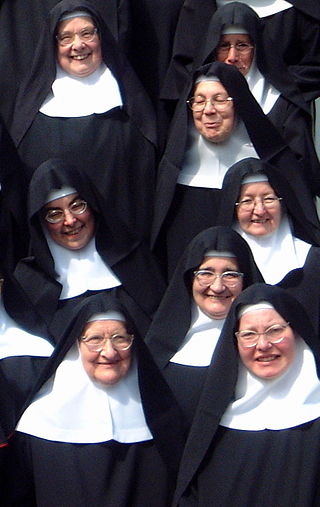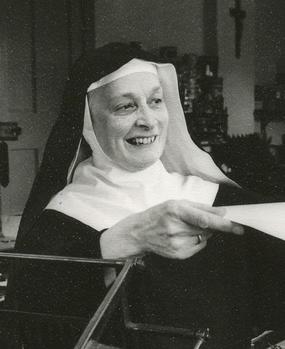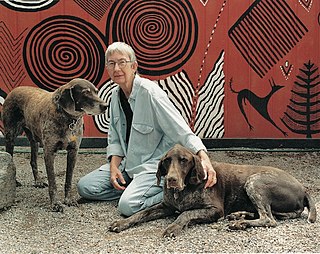
In This House of Brede is a novel by Rumer Godden published in 1969 by Viking in the US and by Macmillan in the UK.

In This House of Brede is a novel by Rumer Godden published in 1969 by Viking in the US and by Macmillan in the UK.
The novel is a portrait of religious life in England that centers on Philippa Talbot, a highly successful professional woman and self-described free-thinker and renegade, who leaves her comfortable life among the London elite to join a cloistered Benedictine community of contemplative Roman Catholic nuns. It begins in 1954, as Philippa enters the monastery, Brede Abbey; continues through her solemn vows in the changing, post-Second Vatican Council environment; and ends as Philippa reluctantly accepts the call to lead a new Benedictine foundation in Japan, where she spent part of her childhood.
From the publisher: For most of her adult life, Philippa Talbot has been a successful British professional. Now in her forties, the World War II–widow has made a startling decision: She's giving up her civil service career and elite social standing to join a convent as a postulant Roman Catholic nun. In Sussex in the south of England, Philippa begins her new life inside Brede Abbey, a venerable, 130-year-old Benedictine monastery. Taking her place among a diverse group of extraordinary women, young and old, she is welcomed into the surprisingly rich and complex world of the devout, whom faith, fate, and circumstance have led there. From their personal stories, both uplifting and heartbreaking, Philippa draws great strength in the weeks, months, and years that follow, as the confidence, conflicts, and poignant humanity of her fellow sisters serve to validate her love and sacred purpose. But a time of great upheaval in the hierarchy of the Catholic Church approaches as the winds of change blow at gale force. And for the financially troubled Brede and those within, it will take no less than a miracle to weather the storm.
In 1975, CBS made a TV film of this book, filmed in both Ireland and England, starring Diana Rigg (as Philippa), Pamela Brown, Gwen Watford, Denis Quilley, Judi Bowker and Nicholas Clay. [1]
The novel's fictional setting, Brede Abbey, is modeled on Stanbrook Abbey, formerly located in Worcestershire. [2] [3] In the book's introduction, Godden wrote that the characters were fictional but "many of the episodes are based on fact" and credits the lives and sayings of Dame Laurentia McLachlan and Sister Mary Ann McArdle of Stanbrook Abbey. Godden's introduction also thanks two other Benedictine abbeys: Talacre Abbey, in Wales, and St. Cecilia's Abbey in Ryde, on the Isle of Wight.
The Benedictines, officially the Order of Saint Benedict, are a mainly contemplative monastic religious order of the Catholic Church for men and for women who follow the Rule of Saint Benedict. The male religious are also sometimes called the Black Monks, in reference to the colour of their religious habits, in contrast to other Benedictine orders such as the Olivetans, who wear white. They were founded in 529 by Benedict of Nursia, a 6th-century Italian monk who laid the foundations of Benedictine monasticism through the formulation of his Rule. Benedict's sister, Scholastica, possibly his twin, also became a religious from an early age, but chose to live as a hermit. They retained a close relationship until her death.

A nun is a woman who vows to dedicate her life to religious service and contemplation, typically living under vows of poverty, chastity, and obedience in the enclosure of a monastery or convent. The term is often used interchangeably with religious sisters who do take simple vows but live an active vocation of prayer and charitable work.

Scholastica is a saint of the Catholic Church, Eastern Orthodox Church and Anglican Communion. She was born in Italy, and a ninth-century tradition makes her the twin sister of Saint Benedict of Nursia. Her feast day is 10 February, Saint Scholastica's Day. Scholastica is traditionally regarded as the founder of the Benedictine nuns.
DameFelicitas Corrigan OSB was an English Benedictine nun, author and humanitarian.

Margaret Rumer Godden was an English author of more than 60 fiction and non-fiction books. Nine of her works have been made into films, most notably Black Narcissus in 1947 and The River in 1951.

Hilda of Whitby was a saint of the early Church in Britain. She was the founder and first abbess of the monastery at Whitby which was chosen as the venue for the Synod of Whitby in 664. An important figure in the Christianisation of Anglo-Saxon England, she was abbess in several convents and recognised for the wisdom that drew kings to her for advice.
Augustine Baker OSB, also sometimes known as "Austin Baker", was a well-known Benedictine mystic and an ascetic writer. He was one of the earliest members of the English Benedictine Congregation which was newly restored to England after the Reformation.

The English Benedictine Congregation (EBC) unites autonomous Roman Catholic Benedictine communities of monks and nuns and is technically the oldest of the nineteen congregations that are affiliated in the Benedictine Confederation.

Dame Laurentia McLachlan, OSB, née Margaret McLachlan, was a Scottish Benedictine nun, Abbess of Stanbrook Abbey, and an authority on church music. She became posthumously known to a wide public when portrayed on the stage in a 1988 play, The Best of Friends.
St Mary's Abbey, also known as Malling Abbey, is an abbey of Anglican Benedictine nuns located in West Malling, Kent, England. It was founded around 1090 by Gundulf, Bishop of Rochester.
Dame Werburg Welch, OSB (1894–1990), born Eileen Welch, was an English artist and Benedictine nun. Born in Cheltenham, her father was a Catholic convert, who sent her to convent schools. She studied art at both Southampton and Bristol, before becoming a nun, and continued her art work.

Stanbrook Abbey is a Catholic contemplative Benedictine Monastery with the status of an abbey, located at Wass, North Yorkshire, England.
Saint Mary's Abbey in Colwich, Staffordshire was a monastery of Roman Catholic nuns of the English Benedictine Congregation, founded in 1623 at Cambrai, Flanders, in the Spanish Netherlands, and closed down in 2020. During the French Revolution, the community was expelled from France and settled at Mount Pleasant, Colwich, in 1836, where it remained for the next 84 years.

Dame Hildelith Cumming, born Barbara Theresa Cumming, was a British nun, printer and musician. Cumming converted to Roman Catholicism about the age of 30, joining Stanbrook Abbey, Worcestershire. There she took over management of the printing press for many years.
Holy Trinity Monastery, East Hendred was briefly a convent of contemplative Benedictine nuns situated in the Vale of White Horse, Oxfordshire, from 2004 to 2012, forming part of the Roman Catholic Diocese of Portsmouth. In late May 2012 the community of two relocated to Howton Grove, Wormbridge, Herefordshire, where it became part of the Roman Catholic Archdiocese of Cardiff. The community retained its dedication to the Most Holy Trinity but, following Benedictine custom, it also became known by the name of the locality to which it had moved, and therefore called Howton Grove Priory.
When referring to Roman Catholic religious orders, the term Second Order refers to those communities of contemplative cloistered nuns which are a part of the religious orders that developed in the Middle Ages.
Driana Enid Wybourne, professed as Sister Catherine Wybourne OSB, was a British Benedictine nun and prioress of Howton Grove Priory, Hereford. She was also a well-known commentator in the British media, with an internet presence as the Digitalnun.

Meinrad Craighead (1936–2019) was an artist, writer, and visionary. Her work explores feminine faces of the divine, mystical experiences, and the sacredness of the natural world.
Mary Boulding was an English nun, theologian, writer and translator. The oldest of three daughters, she declined a scholarship to Lady Margaret Hall, Oxford, and went to Stanbrook Abbey to become a nun. Boulding took her solemn vows in April 1952 after expressing her wish to delay her profession of vows, but this was remedied by the abbess Elizabeth Sumner who challenged her to theological endeavors. Her first book was published in 1973, and she joined the theological commission of the English Benedictine Congregation in the late 1970s. Boulding later undertook a six-month tour of the Holy Land, Australia, and Japan in preparation for the marking the fifteenth centenary of Benedict of Nursia's birth in 1980, where she addressed mixed audiences. She spent the years 1985 to 2004 living as a hermit before returning to Stanbrook in early 2004 and spending the final years of her life translating, revising, and travelling.

Catherine Gascoigne was the English abbess of Cambrai from 1624 to 1673.